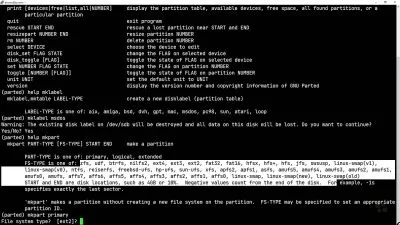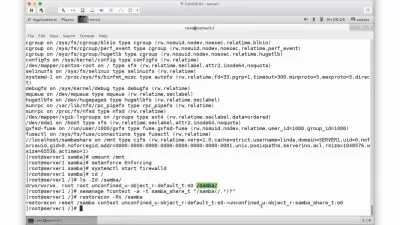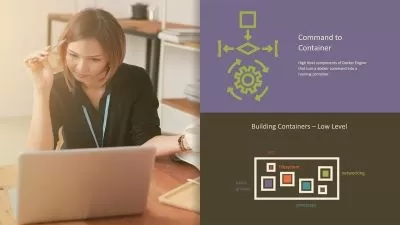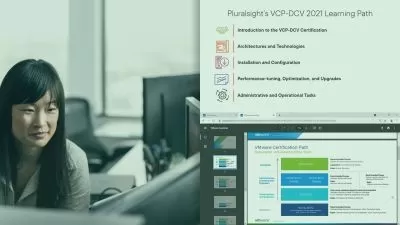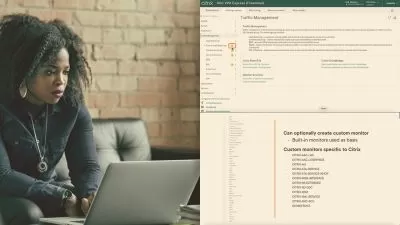Virtual Embedded Linux Board
Linux Trainer
1:11:40
Description
QEMU, Linux, Boot Linux image on QEMU
What You'll Learn?
- Understanding the boot flow in Linux
- Configuring u-boot, kernel and root file system
- Building u-boot, kernel and root file system
- Virtualization using Qemu
- Automounting dev, proc and sysfs using fstab
- Enable tftp connection to copy files for your board
- Enable ssh connection to remotely connect to board
- Create users and groups
- Enable networking using /etc/network/interfaces
- MMC and NFS Boot
Who is this for?
What You Need to Know?
More details
DescriptionDevelop your own Virtual board using QEMU having full boot flow from u-boot to rootfs
This comprehensive course will take you step-by-step through engaging video tutorials and teach you all the essential concepts and topics you need to develop your own virtual board.
What will you learn in this course
We will introduce you to QEMU
Use of crosstool-ng to build your own toolchain
Verify your toolchain by writing a simple hello world program
Building latest version of u-boot
Running latest version of u-boot in QEMU
Setting up sd card for saving the u-boot environment
Building latest version of Linux Kernel
Running latest version of Linux Kernel in QEMU
Generating a simple initramfs and using it in QEMU
Building latest version of busybox
Generating an initramfs from busybox image and loading it in QEMU
Booting rootfs from a virtual sd card
Generating a virtual sd card with three partitions and performing full MMC Boot by updating u-boot environment
Setting up environment to perform NFS Boot
Cross compiling kernel modules and applications
Adding support for dropbear to perform ssh and scp operation
Adding support for ssh
Adding daemons like syslogd, klogd and crond
Displaying logo during startup
Customizing inittab, fstab and crontab
Setting up network interfaces using ifup/ifdown (/etc/network/hosts)
Creating users and groups and setting password
Exploring various options of mount command on different filesystems (devtmpfs, sysfs, procfs, tmpfs)
Using strace to debug applications
mdev to set permissions for device nodes
Let me guide you through the highlights of what you'll learn in this comprehensive program:
1. Essential Linux Commands Galore: syslogd, klogd, dd, losetup, cfdisk, cpio, gzip, mkfs.ext4, mount, umount, mknod,zcat, openssl, scp, ssh, nc, ..
2. Qemu Command Line Options: -M, -append, -initrd, -kernel, -m, -cpu, -nograhic, -net
3. Kernel Configuration: CONFIG_DEVTMPFS_MOUNT, CONFIG_ROOT_NFS, CONFIG_TMPFS, CONFIG_DEFAULT_HOSTNAME, CONFIG_IKCONFIG, CONFIG_IKCONFIG_PROC
4. U-boot configuration: CONFIG_ENV_IS_IN_FLASH, CONFIG_ENV_IS_IN_FAT, CONFIG_ENV_FAT_INTERFACE, CONFIG_CMD_EDITENV, CONFIG_CMD_BOOTD, CONFIG_ENV_FAT_DEVICE_AND_PART
5. Environmental Variables: PATH, ARCH, CROSS_COMPILE, PS1
6. Cross compiling packages : dropbear, strace
7. Boot Types: NFS Boot, MMC Boot, Initrd
8. Linux Files: inittab, fstab, crontab, profile, passwd, shadow, group
There's no risk either !
This course comes with a 30 day money back guaranteed!. If you are not satisfied with the course, you'll get your money back
So what are you waiting for, enroll now and take the next step in developing your own virtual board
Who this course is for:
- Linux developers who want to have their virtual embedded Linux boaard
Develop your own Virtual board using QEMU having full boot flow from u-boot to rootfs
This comprehensive course will take you step-by-step through engaging video tutorials and teach you all the essential concepts and topics you need to develop your own virtual board.
What will you learn in this course
We will introduce you to QEMU
Use of crosstool-ng to build your own toolchain
Verify your toolchain by writing a simple hello world program
Building latest version of u-boot
Running latest version of u-boot in QEMU
Setting up sd card for saving the u-boot environment
Building latest version of Linux Kernel
Running latest version of Linux Kernel in QEMU
Generating a simple initramfs and using it in QEMU
Building latest version of busybox
Generating an initramfs from busybox image and loading it in QEMU
Booting rootfs from a virtual sd card
Generating a virtual sd card with three partitions and performing full MMC Boot by updating u-boot environment
Setting up environment to perform NFS Boot
Cross compiling kernel modules and applications
Adding support for dropbear to perform ssh and scp operation
Adding support for ssh
Adding daemons like syslogd, klogd and crond
Displaying logo during startup
Customizing inittab, fstab and crontab
Setting up network interfaces using ifup/ifdown (/etc/network/hosts)
Creating users and groups and setting password
Exploring various options of mount command on different filesystems (devtmpfs, sysfs, procfs, tmpfs)
Using strace to debug applications
mdev to set permissions for device nodes
Let me guide you through the highlights of what you'll learn in this comprehensive program:
1. Essential Linux Commands Galore: syslogd, klogd, dd, losetup, cfdisk, cpio, gzip, mkfs.ext4, mount, umount, mknod,zcat, openssl, scp, ssh, nc, ..
2. Qemu Command Line Options: -M, -append, -initrd, -kernel, -m, -cpu, -nograhic, -net
3. Kernel Configuration: CONFIG_DEVTMPFS_MOUNT, CONFIG_ROOT_NFS, CONFIG_TMPFS, CONFIG_DEFAULT_HOSTNAME, CONFIG_IKCONFIG, CONFIG_IKCONFIG_PROC
4. U-boot configuration: CONFIG_ENV_IS_IN_FLASH, CONFIG_ENV_IS_IN_FAT, CONFIG_ENV_FAT_INTERFACE, CONFIG_CMD_EDITENV, CONFIG_CMD_BOOTD, CONFIG_ENV_FAT_DEVICE_AND_PART
5. Environmental Variables: PATH, ARCH, CROSS_COMPILE, PS1
6. Cross compiling packages : dropbear, strace
7. Boot Types: NFS Boot, MMC Boot, Initrd
8. Linux Files: inittab, fstab, crontab, profile, passwd, shadow, group
There's no risk either !
This course comes with a 30 day money back guaranteed!. If you are not satisfied with the course, you'll get your money back
So what are you waiting for, enroll now and take the next step in developing your own virtual board
Who this course is for:
- Linux developers who want to have their virtual embedded Linux boaard
User Reviews
Rating
Linux Trainer
Instructor's Courses
Udemy
View courses Udemy- language english
- Training sessions 19
- duration 1:11:40
- Release Date 2024/03/19






